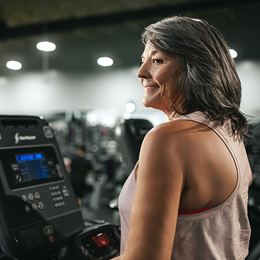Here’s how to build a resilient immune system for fall and winter by integrating fitness and nutrition.
A robust immune system is built on a foundation of consistent, healthy habits, not just a single nutrient. While vitamin C is beneficial, true resilience against seasonal illnesses comes from an integrated approach that combines moderate exercise, strategic nutrition, quality sleep, and stress management. By focusing on these pillars, you can create a synergistic effect that enhances your body’s natural defenses far more effectively than relying on vitamin C alone.
The Myth of the Magic Bullet
Every year, it was the same story for me. As soon as the first crisp autumn breeze rolled in, I’d start mainlining orange juice. I’d pop vitamin C supplements like candy, convinced I was building an impenetrable fortress against the sniffles and coughs that lurked in every office and grocery store. Yet, like clockwork, by mid-October, I’d be sidelined with the season’s first cold, wrapped in a blanket, wondering what went wrong. I was doing the “right thing,” so why did my immune system seem to crumble at the first sign of cold weather?
My mistake was a common one: I was looking for a single magic bullet to solve a complex biological puzzle. I was ignoring the bigger picture—the intricate, interconnected web of lifestyle factors that truly govern our immunity. It wasn’t until I started to look beyond the vitamin aisle and focused on the powerful relationship between the immune system and exercise, nutrition, and recovery that the cycle of seasonal sickness finally broke. True resilience, I discovered, isn’t found in a pill; it’s built in the gym, in the kitchen, and while you sleep.
This guide is for anyone who is tired of the annual cycle of sickness. We’re going to debunk the myths and dive into the science of how an integrated approach to fitness and nutrition can forge a truly resilient immune system, ready to take on whatever fall and winter throw your way.
Your Immune System: An Army Within
Before we explore how to strengthen it, let’s understand what the immune system is. It’s not a single organ but a complex network of cells, tissues, and organs that work in concert to defend your body against pathogens like bacteria, viruses, and fungi. Think of it as your body’s personal, highly sophisticated army. This army has two main branches: the innate immune system (your rapid-response, non-specific defense) and the adaptive immune system (your specialized, memory-forming defense). A healthy lifestyle ensures both branches are well-staffed, well-equipped, and ready for battle.
The Crucial Link Between the Immune System and Exercise
For decades, we’ve known exercise is good for us, but its profound impact on our immune function is a game-changer. Engaging in regular, moderate-intensity exercise creates a cascade of positive effects that bolster your body’s defenses.
- Mobilizing the Troops Through the Lymphatic System: Your lymphatic system is a critical part of your immune system. It’s a network of vessels and nodes that transports lymph fluid, which contains infection-fighting white blood cells. Unlike your circulatory system, which has the heart to pump blood, the lymphatic system is passive; it relies on the contraction of your muscles to move fluid. Each time you exercise, the contraction of your muscles acts as a pump, propelling lymph through the system. This increases the circulation of key immune cells, like lymphocytes and Natural Killer (NK) cells, enhancing immune surveillance and making it more likely that pathogens will be detected and eliminated quickly.
- Boosting T-Cell Production: T-cells are the elite special forces of your adaptive immune system. They are responsible for identifying and killing infected cells and for coordinating the overall immune response. Research has shown that moderate exercise can increase the production and circulation of T-cells. This means that not only do you have more of these elite soldiers on patrol, but they are also more effective at their job.
- Reducing Chronic Inflammation: Inflammation is a natural and necessary part of the immune response. It’s what happens when your body sends immune cells to the site of an injury or infection. However, chronic, low-grade inflammation can be detrimental, contributing to a host of diseases and weakening the immune system over time. Regular exercise has a potent anti-inflammatory effect. It helps to reduce the levels of inflammatory cytokines (proteins that promote inflammation) and increases the levels of anti-inflammatory cytokines. This helps to create a balanced internal environment where your immune system can function optimally without being in a constant state of over-activation.
A strong immune system is one of your greatest assets. At YouFit Gyms, we provide the tools and support to help you build a stronger, healthier you from the inside out. Start building your resilience today with a complimentary three-day pass!
The Gut: Your Immune System’s Headquarters
You might think of your gut solely in terms of digestion, but it’s actually the command center for your immune system. Roughly 70-80% of your immune cells reside in your gut. The gut lining is a critical barrier, deciding what gets absorbed into your bloodstream and what gets blocked. This bustling ecosystem of trillions of bacteria, known as the gut microbiome, plays a pivotal role in training and regulating your immune system.
The gut-brain-immune axis is the term for the complex communication network that connects these three systems. A healthy, diverse gut microbiome helps to promote a balanced immune response, while an imbalanced microbiome (dysbiosis) can lead to chronic inflammation and a weakened defense system.
Feeding Your Defenses: Immune-Supportive Nutrition
To build a resilient immune system, you need to provide it with the right fuel. This means focusing on a whole-foods diet rich in the following nutrients:
- Vitamin C: Yes, it’s still important! Found in citrus fruits, bell peppers, strawberries, and broccoli, Vitamin C is a powerful antioxidant that supports various cellular functions of both the innate and adaptive immune systems.
- Vitamin D: Often called the “sunshine vitamin,” Vitamin D is a potent immune modulator. It can be found in fatty fish, fortified milk, and eggs, but supplementation is often recommended, especially in the fall and winter months.
- Zinc: This mineral is crucial for immune cell development and communication. Excellent sources include lean meats, shellfish (especially oysters), legumes, seeds, and nuts.
- Probiotics and Prebiotics: Probiotics are the beneficial bacteria found in fermented foods like yogurt, kefir, sauerkraut, and kimchi. Prebiotics are the fiber that feeds these beneficial bacteria, found in foods like garlic, onions, bananas, and oats. Consuming both is key to a healthy gut microbiome.
- Polyphenols: These are plant compounds with powerful antioxidant and anti-inflammatory properties. Load up on colorful fruits and vegetables, green tea, dark chocolate, and olive oil to get a wide variety.
The Goldilocks Principle: Your Weekly Immune-Boosting Workout Plan
When it comes to the immune system and exercise, more is not always better. Overtraining, or pushing your body too hard without adequate rest, can actually suppress the immune system by increasing stress hormones like cortisol and causing chronic inflammation. The key is to find the “just right” balance of intensity and recovery.
This sample plan balances moderate-intensity cardio, strength training, and crucial recovery sessions.
- Monday: Moderate-Intensity Cardio (30-45 minutes)
- Activity: Brisk walking on an incline, jogging, cycling on a stationary bike, or using the elliptical.
- Why: This improves circulation, mobilizes lymphatic fluid, and gets your heart rate up without causing excessive stress to the body. You should be able to hold a conversation during this type of cardio.
- Tuesday: Full-Body Strength Training (45-60 minutes)
- Activity: Focus on compound movements like squats, lunges, push-ups, and rows. Aim for 3 sets of 8-12 repetitions.
- Why: Building and maintaining muscle mass is crucial for overall health and a strong immune system. The muscle contractions during strength training are also excellent for lymphatic circulation.
- Wednesday: Active Recovery (20-30 minutes)
- Activity: Gentle yoga, stretching, or a leisurely walk.
- Why: Recovery days are non-negotiable. They allow your body to repair and adapt. Active recovery helps to reduce muscle soreness and promote blood flow without adding stress.
- Thursday: Moderate-Intensity Cardio (30-45 minutes)
- Activity: Choose a different modality from Monday to keep things interesting.
- Friday: Full-Body Strength Training (45-60 minutes)
- Activity: Similar to Tuesday, but you can vary the exercises. For example, swap squats for deadlifts or push-ups for dumbbell bench presses.
- Saturday: Fun & Functional Activity (60+ minutes)
- Activity: Go for a long hike, take a dance class, or play a sport you enjoy.
- Why: Movement should be enjoyable! This helps to manage stress (which is also key for immune function) and keeps you consistent.
- Sunday: Complete Rest
- Activity: Rest, prioritize sleep, and engage in relaxing activities.
- Why: This is when your body does its most important repair work. Quality sleep is arguably the most powerful immune booster available.
Find the perfect balance for your body at YouFit Gyms, where we have everything from cardio equipment to weights and yoga classes. Discover your ideal routine with a complimentary three-day pass!
Frequently Asked Questions (FAQ)
Q: Can exercise prevent me from getting a cold?
A: While no single thing can guarantee you won’t get sick, a consistent routine of moderate exercise can significantly reduce your risk. By enhancing immune cell circulation and reducing inflammation, it makes your body a more formidable host for pathogens, meaning you may get sick less often, and when you do, the duration and severity may be reduced.
Q: How do I know if I’m exercising too much?
A: Signs of overtraining include persistent fatigue, prolonged muscle soreness, decreased performance, trouble sleeping, an elevated resting heart rate, and, ironically, an increased frequency of illness. It’s crucial to listen to your body and prioritize recovery. If you’re feeling run down, a rest day is more beneficial than a tough workout.
Q: Is it okay to exercise if I already feel a cold coming on?
A: The general rule of thumb is the “neck check.” If your symptoms are above the neck (runny nose, mild sore throat, sneezing), light-intensity exercise like a walk is generally okay and may even help you feel better. If your symptoms are below the neck (chest congestion, body aches, fever, stomach upset), it’s best to rest and allow your body to use its energy to fight the infection.
Q: Does stress really affect my immune system?
A: Yes, profoundly. Chronic stress leads to elevated levels of the hormone cortisol. Prolonged cortisol exposure can interfere with the function of your T-cells and other immune cells, essentially suppressing your immune response and leaving you more vulnerable to infection. This is why stress-management practices like mindfulness, yoga, and even regular exercise are so important for immune health.
Q: Besides nutrition and exercise, what is the most important factor for a healthy immune system?
A: Quality sleep is arguably the most critical and often overlooked pillar of immune health. During sleep, your body undergoes vital repair processes and produces and releases cytokines, which are proteins that target infection and inflammation. Consistently sleeping 7-9 hours per night is one of the most effective things you can do to keep your immune system in fighting shape.








